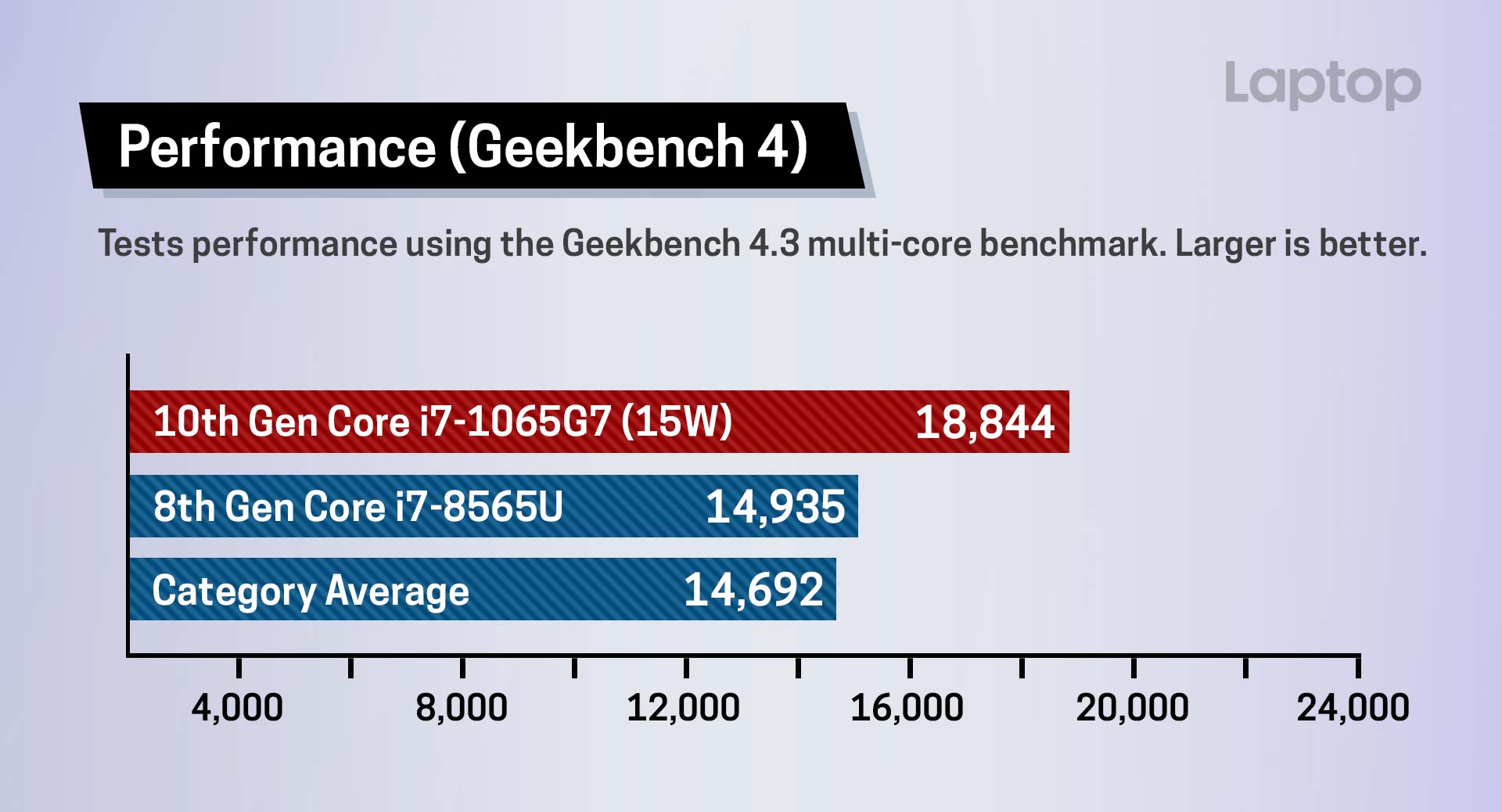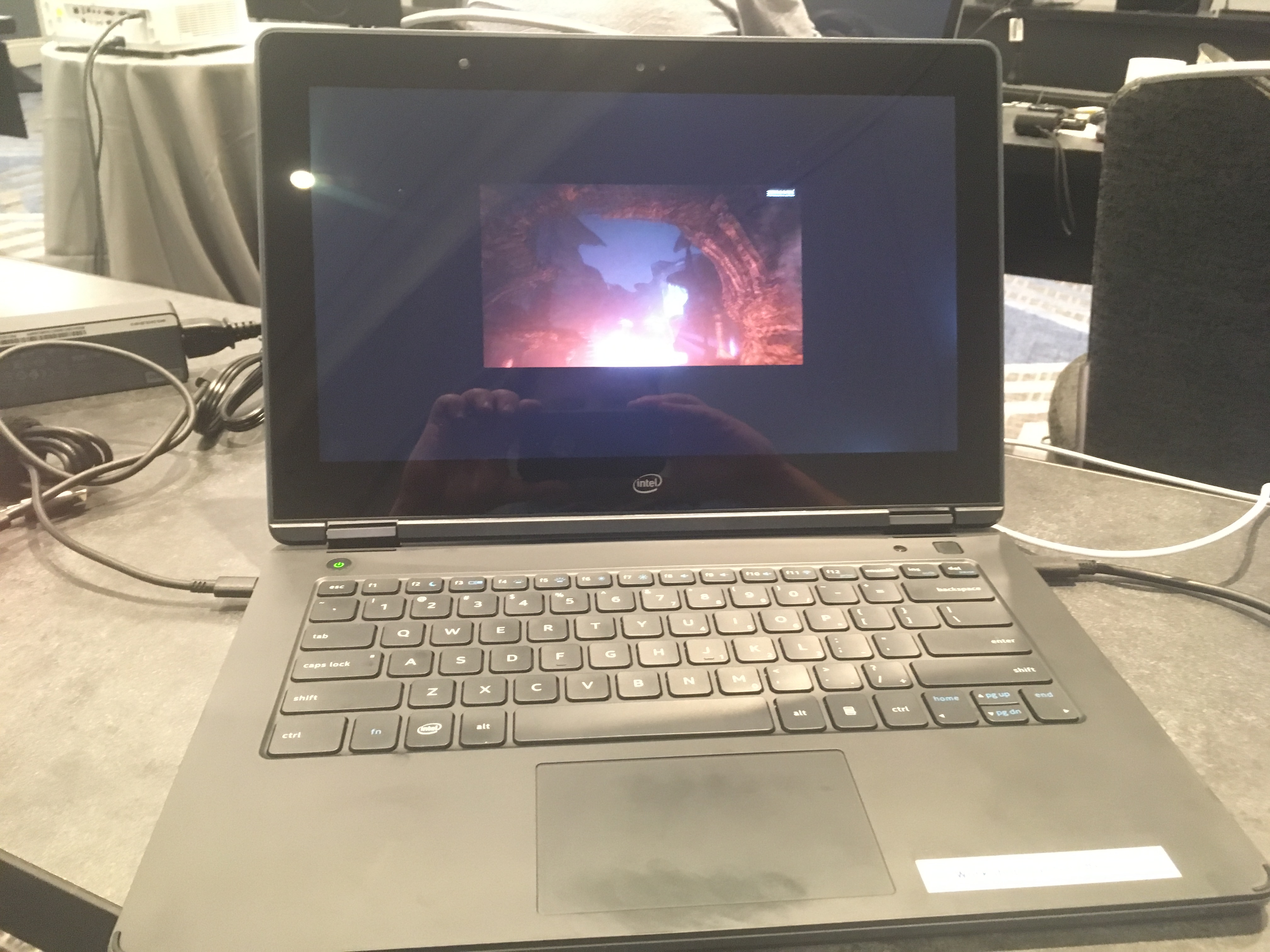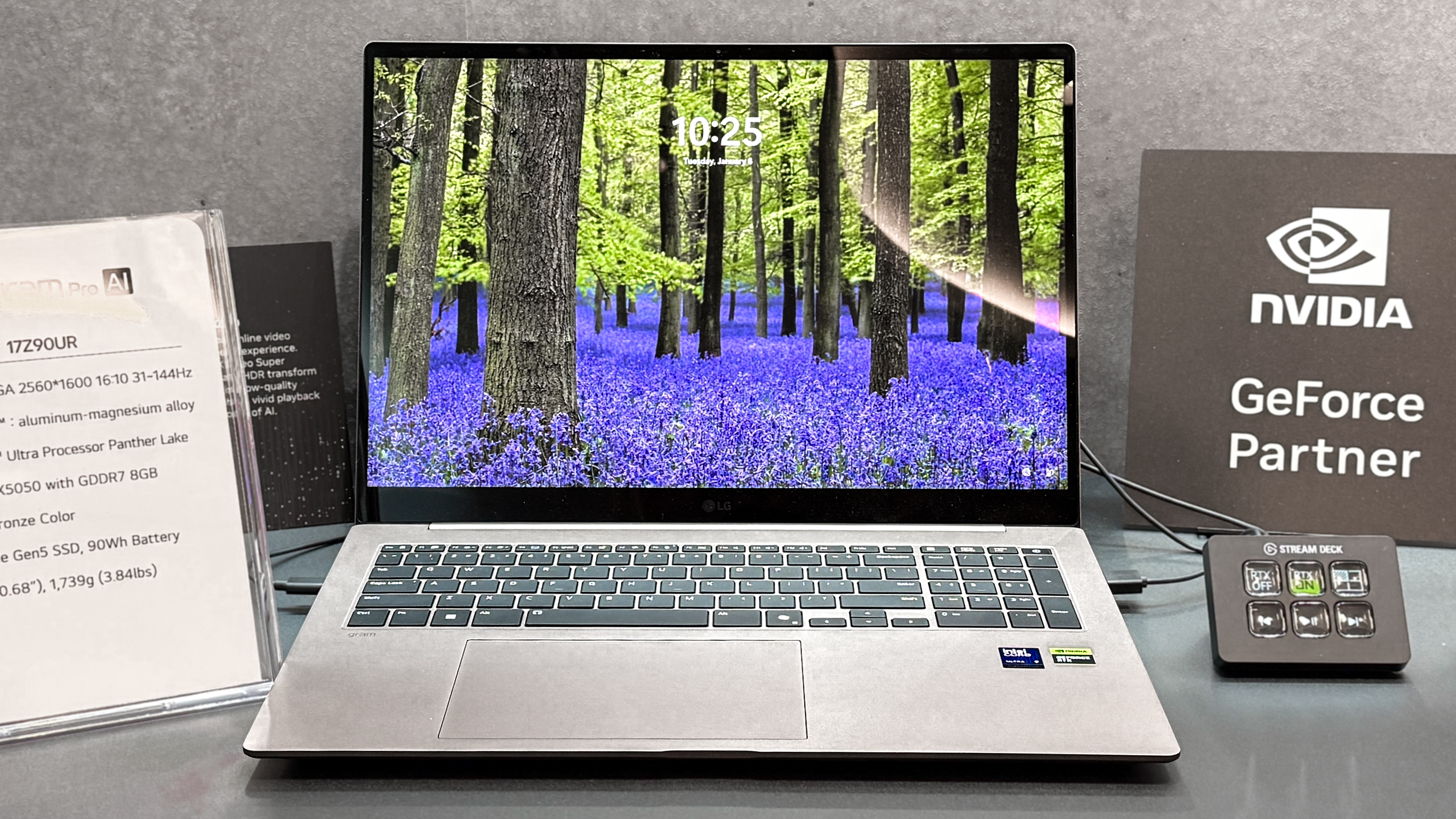Intel 10th Gen Ice Lake CPU Benchmarked: Here's How Much Faster It Is

Your next ultraportable will have significantly better performance than the laptops available on the market today. That's thanks to Intel's new 10-nanometer 10th Gen Ice Lake CPUs, which we got a chance to benchmark before they arrive on ultrabooks later this year.
Before we dig into the results, we should note that these benchmarks were run on an Intel software development system that the chipmaker claims was not 100% optimized for peak performance.
That 10th Gen Ice Lake system was equipped with a Core i7-1065G7 CPU, 8GB of RAM and a 256GB Intel Pro 7600p SSD. The Core i7-1065G7 is the second-fastest Ice Lake U-series chip of the 11 SKUs, offering four cores, eight threads and a max turbo frequency of 3.9Ghz. The "G7" in this confusing model number means the CPU has the high-end version of the new Iris Plus integrated graphics.
To get an idea of the performance boosts Ice Lake offers, we compared Intel's test system to a 13-inch HP Spectre x360 with an 8th Gen Core i7-8565U Whiskey Lake CPU (remember, there are no 9th Gen U-series CPUs), 8GB of RAM and a 256GB PCIe NVMe M.2 SSD.
Let's see how the Core i7 Ice Lake CPU performed.
Geekbench 4 overall performance benchmark
So, how much faster are the new 10-nanometer Ice Lake chips than the last-gen Whiskey Lake processors? Quite a bit, it turns out. The Intel system with a Core i7-1065G7 (at 15 watts) scored an 18,844 on the Geekbench 4.3 overall performance test, which is considerably higher than the Spectre x360's 14,935 result. For comparison, the average score for a premium laptop (any notebook that costs more than $800) is 14,692.

Video transcoding benchmark
The 10th Gen CPU's performance on our video editing test spells good news for content creators. The Core i7 Ice Lake chip transcoded a 4K video to 1080p resolution in 16 minutes and 1 second, outpacing the Spectre x360's 8th Gen Core i7 CPU, which needed 22 minutes and 30 seconds to complete the same task.
Get instant access to breaking news, the hottest reviews, great deals and helpful tips.
| Row 0 - Cell 0 | 10th Gen Core i7-1065G7 | 8th Gen Core i7-8565U | Category Average |
| Video Transcoding Test | 16:01 | 22:30 | 21:50 |
The average premium laptop converts the video in 21 minutes and 50 seconds.
Graphics benchmarks
Intel claims the new Iris Plus graphics for 10-Gen CPUs can play "top games" at 1080p resolution with 2x faster frame rates. Our tests confirmed those claims, however, core gamers still need a dedicated graphics card for higher frame rates or to play modern titles at Ultra settings.

On the 3DMark Ice Storm Unlimited benchmark, the Iris Plus-equipped Intel system reached 112,379 whereas the UHD Graphics 620 inside the Spectre x360 landed at just 90,977. That's a pretty impressive result for the 10th Gen system when you consider that the Huawei MateBook 13 with a discrete Nvidia GeForce MX150 GPU (141,995) scored only 21% higher.
| Row 0 - Cell 0 | Intel Iris Plus | UHD Graphics 620 | Category Average |
| 3DMark Ice Storm Unlimited | 112,379 | 90,977 | 85,746 |
Even with the performance gains, 10th Gen integrated graphics won't replace a discrete graphics card. While you won't have problems playing older games at high frame rates on integrated Ice Lake graphics, more demanding titles and VR games still need a discrete Nvidia or AMD GPU.
Dirt 3 and GTA V benchmarks
The Intel test system with Intel Iris Plus graphics played Dirt 3 at 1080p resolution on medium graphics settings at a smooth 100.1 frames per second, making it much better for gaming than the Graphics UHD 620 GPU in the Spectre x360 (56 fps). This time, however, the MX150 GPU MateBook 13 offered much faster performance (166 fps).
| Row 0 - Cell 0 | Intel Iris Plus | UHD Graphics 620 | Category Average |
| Dirt 3 (1080p, Medium) | 100 fps | 56 gps | 68 fps |
| Grand Theft Auto V (800x600, Very High) | 19 fps | 9 fps | N/A |
Graphically demanding games still aren't playable on the latest integrated graphics. Grand Theft Auto V played at 19 fps at 800 x 600-pixel resolution and very high graphics settings. While that's less laggy than the 9 fps we suffered through on the Spectre x360, it's still well below our 30-fps playability threshold.
Bottom Line
Overall, the 10th Gen Core i7 CPU (Core i7-1065G7) coming to ultrabooks later this year offers solid performance gains over last-gen Whiskey Lake processors. Just don't expect a miracle. We saw an average performance leap of between 20% and 30% across all of our benchmarks, which is a great result, if short of groundbreaking. The new integrated Iris Plus graphics offer about the same 20% boost in gaming performance, but people who want the highest frame rates or to play taxing games still need discrete graphics.
Phillip Tracy is the assistant managing editor at Laptop Mag where he reviews laptops, phones and other gadgets while covering the latest industry news. Previously, he was a Senior Writer at Tom's Guide and has also been a tech reporter at the Daily Dot. There, he wrote reviews for a range of gadgets and covered everything from social media trends to cybersecurity. Prior to that, he wrote for RCR Wireless News covering 5G and IoT. When he's not tinkering with devices, you can find Phillip playing video games, reading, traveling or watching soccer.
